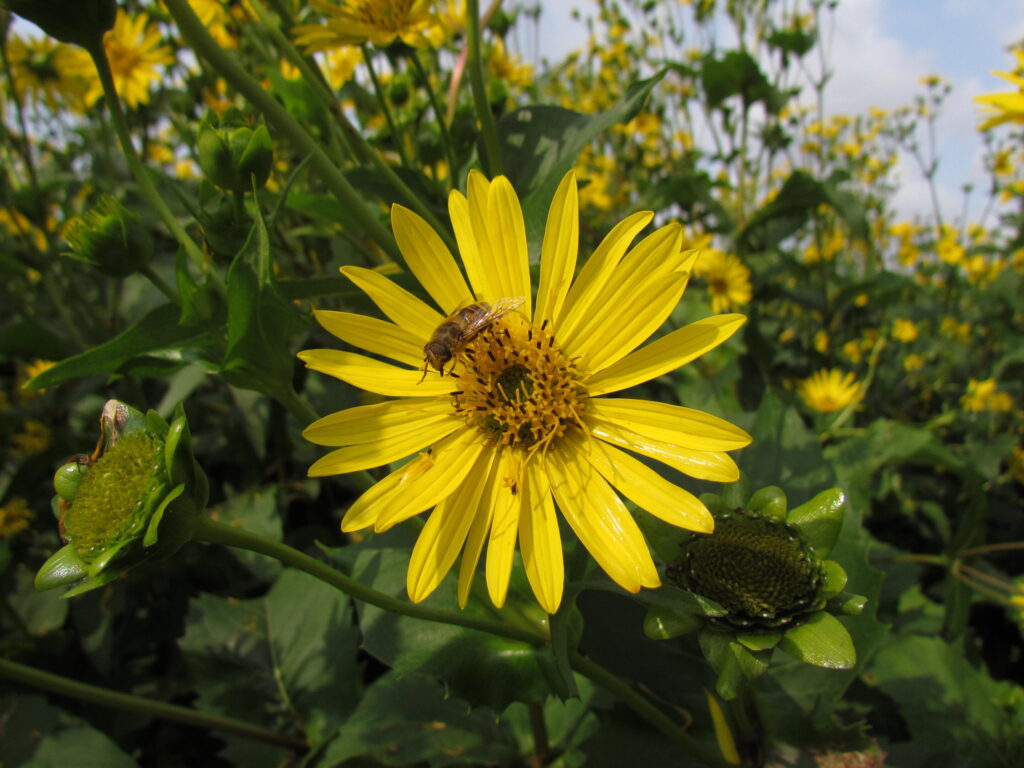
The cup plant (Silphium perfoliatum) emerges as a sustainable alternative to silage maize for bioenergy production, according to a comprehensive study by researchers at the University of Bayreuth. Published in the journal GCB Bioenergy, the study highlights the ecological advantages of the cup plant over traditional maize cultivation, which is fraught with environmental challenges.
As Europe strives to meet its climate neutrality goals by 2050, the quest for sustainable agricultural crops for energy production intensifies. In Germany, maize is the predominant energy crop, yet its cultivation is linked to soil erosion, nutrient leaching, and notably, nitrate contamination of groundwater. These issues underscore the need for alternative crops that can mitigate environmental impacts while delivering comparable biomass and energy yields.
The Cup Plant: A Promising Alternative
Native to North America, the cup plant is a perennial species noted for its deep-rooting system and long-term usability. Researchers from the Agroecology research group and the Botanical Garden (ÖBG) at the University of Bayreuth conducted a four-year study to assess its growth and ecological potential. Utilizing the lysimeter facility at the ÖBG, they simulated controlled conditions with both adequate water supply and moderate drought stress, reflecting the challenges posed by climate change.
“Our findings clearly show that from the second year onwards, the cup plant produces more biomass than maize,” stated Anna Hollweg, a master’s student and lead author of the study. “Particularly noteworthy is the cup plant’s ability to efficiently absorb nitrogen from the soil, drastically reducing nitrate—a nitrogen compound—leaching into groundwater.”
In the third and fourth years of the experiment, nitrate leaching under the cup plant was up to 99% lower than under maize.
Resilience Under Drought Conditions
The study further revealed the cup plant’s resilience under moderate drought. While maize showed reduced biomass under drought stress, the cup plant maintained stability with only minor losses. “In general, the cup plant’s deep root system enables it to access water and nutrients in deeper soil layers,” explained Prof Dr. Johanna Pausch, Professor of Agroecology at the University of Bayreuth. “It also promotes the activity of soil microorganisms, which contributes to long-term improvement of soil quality.”
This resilience positions the cup plant as a reliable energy crop in the face of climate change, where increasing drought conditions are anticipated.
Implications for Sustainable Agriculture
The findings from Bayreuth have significant implications for sustainable agriculture and energy production. As countries worldwide grapple with the dual challenges of climate change and energy security, the adoption of crops like the cup plant could offer a viable path forward. Its ability to reduce environmental degradation while maintaining energy yields presents a compelling case for its broader cultivation.
Moreover, the cup plant’s ecological benefits align with global efforts to transition towards more sustainable agricultural practices. As policymakers and farmers consider alternatives to maize, the cup plant’s robust performance under varying environmental conditions could inspire a shift in crop selection strategies.
Looking Ahead
As the world moves towards sustainable energy solutions, the cup plant’s role in bioenergy production is poised to grow. Future research may explore its integration into existing agricultural systems and its potential to contribute to carbon sequestration efforts. Meanwhile, the study from the University of Bayreuth serves as a timely reminder of the innovative approaches needed to achieve climate goals.
In conclusion, the cup plant not only offers an ecologically beneficial alternative to maize but also stands as a testament to the potential of sustainable agricultural innovation in addressing global environmental challenges.






